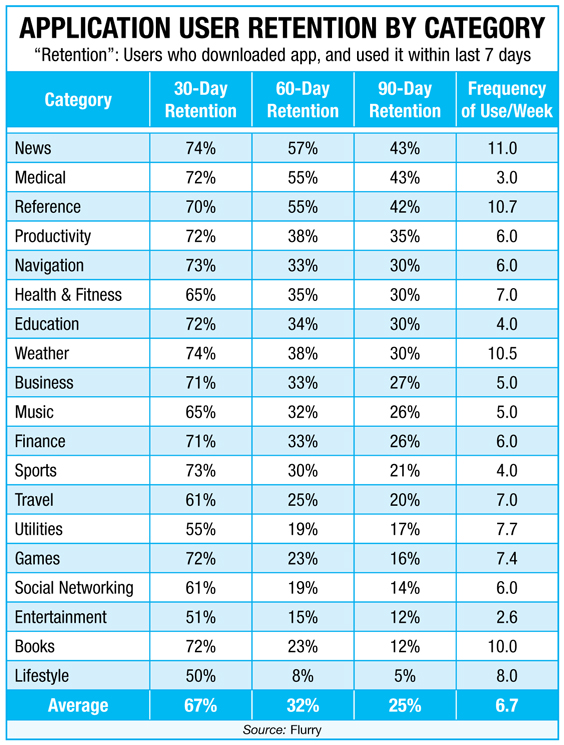While the word “app” recently appeared on an annual list of words that should be banned from the English language, you won’t see rich mobile application developers, giddy PR executives and satisfied smartphone owners dropping it from their lexicons.
You see, mobile applications are big, and getting bigger. Today there are some 115,000 third-party apps available in Apple’s App Store on iTunes, some for free and others for a charge. Over at the Android Market, the number of apps is close to 20,000. Those figures are expected to more than double—at least—by the end of the year.
From a revenue standpoint, it has been reported that Apple’s App Store sells $200 million worth of apps every month, or about $2.4 billion a year. And the space is only in its infancy.
CAPTURING ATTENTION
From the PR practitioner’s point of view, the mobile app is another weapon in an organization’s branding and awareness arsenal. In the case of Benjamin Moore Paints, its “Ben Color Capture” app engages a young demographic by taking a fun approach to color, says Eileen McComb, director of communications at Benjamin Moore.
In a nutshell, the free-of-charge Ben Color Capture app allows iPhone users to match up colors from iPhone photos they’ve taken with more than 3,300 hues of Benjamin Moore paints. They can then find the closest brick-and-mortar store location to follow up.
“We wanted the younger set to understand that color can be sexy,” says McComb. “When you can give them an application that ties them to color, they may see it in a different way than before and they can share that with their friends.”
Having an application available for download on the iPhone was an opportunity that Benjamin Moore couldn’t pass up. “We’re thought of as an old brand in a mature industry, and the app positions us as being a technology-engaged, forward-thinking company,” says McComb.

COLOR CAMPAIGN
To create awareness around the launch of the app in the App Store, McComb used traditional media relations, going to a New York Times contact to spread the news. In a week, the story broke and was picked up by national newspapers online, and moved on to other media.
“ABC News was so intrigued that they produced a segment about it in their ‘new technology’ feature,” says McComb.
With the press as the only launch platform, Ben Color Capture rose to the top 50 downloaded apps on the Apple store site within two weeks, says McComb, and it’s consistently stayed near the top since. The app is regularly promoted within their social media program, through Twitter, Facebook, YouTube and blogs.
BUYING IN
Good traditional media coverage—including apps-specific media—is key, but according to Vijay Chattha, head of mobile apps marketing and PR firm AppLaunchPR, online and social media are equally important platforms. “Positive online reviews, Twitter mentions, Facebook fan pages, all play a big part in creating and retaining awareness around an application,” he says.
Chattha, who has helped launch more than 20 mobile applications for clients, calls the space “the wild, wild West,” as many application developers look for the big financial score. But then there are apps designed less for revenue generation and more for brand extension, like Benjamin Moore’s. And PR/marketing efforts are becoming more clever by the day, says Chattha.
For example, one client, Directed Electronics, has a device called the Viper Smart Start, which allows you to remotely turn on your engine, or heat or cool your car. The Viper application for the iPhone is available in the Apple App store for free. Smartphone users then become interested in going to a store and buying the in-car electronics, which retails for $500. “The app serves as a teaser to buy the product,” says Chattha.
A key component of mobile apps is the ability to measure results. McComb measures Web site hits generated from the app, and she’s able to track consumers who hit brick-and-mortar stores after using it. In addition, there’s a number of analytics firms tracking a variety of metrics (see graphic).
Since the space is new, Chattha says there are key questions to consider before you launch an app, including:
• Does the app have analytics code installed?
• Will it be promoted outside of PR?
• When should you launch? (day and time are important)
• What category should it be listed under?
If an organization does due diligence on issues such as these, Chattha says success is much more likely.
Chattha believes that as the space matures, more companies will see the benefits of mobile apps as a branding tool. “Our clients feel that the apps help make their brands relevant,” Chattha says.
It’s a feeling that McComb shares. In September 2009, Ben Color Capture won a first-ever MOBI award—honoring excellence in mobile media, marketing and advertising—beating out Pizza Hut and MasterCard in the Retail/eCommerce category. The app is frequently mentioned at industry events, and chatter on Twitter and Facebook continues.
But Benjamin Moore is not resting on its laurels. It has another app in the works, this time for painting contractors, a core constituent. And they’ll be designing their apps for the Android system as well. PRN
CONTACT:
Contact: Eileen McComb, [email protected]; Vijay Chattha [email protected].
